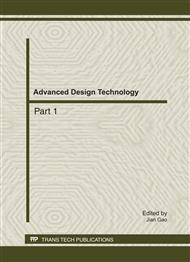p.201
p.209
p.213
p.217
p.224
p.228
p.232
p.237
p.241
Study on the Stress Intensity Factor of Double Cracks Parallel to and Lying on the Interface in the Cladding Material Structure
Abstract:
Taking the cladding material structure with double interface cracks parallel to and lying on the interface as the study object, based on the theoretical study on the crack tip stress intensity factor(SIF), using the finite element software ANSYS, the SIFs are researched by changing the crack space, crack length, thickness ratio, load and crack location. The results show that, the crack SIFs increase firstly and then decrease with the crack space increase, increase with the increases of the crack length and the load, decrease a little with the thickness ratio increase, decrease firstly and then increase with the increase of distance between the crack and the boundary.
Info:
Periodical:
Pages:
224-227
Citation:
Online since:
August 2011
Authors:
Price:
Сopyright:
© 2011 Trans Tech Publications Ltd. All Rights Reserved
Share:
Citation:


